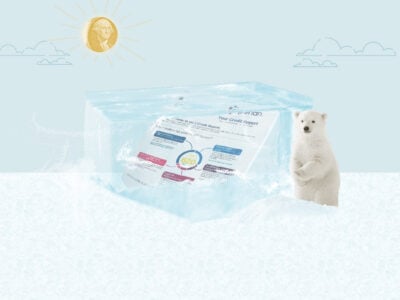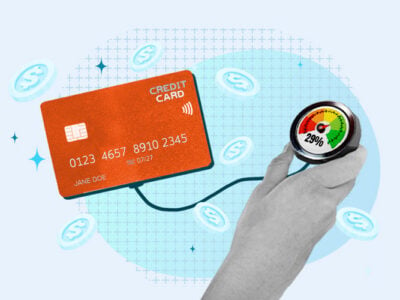Table of Contents
What is a goodwill letter?
A goodwill letter is a letter you write to your creditor asking them to remove or alter information on your credit report, such as a late payment or closed account. A goodwill letter can also be called a:
- Forgiveness letter
- Forgiveness removal letter
- Goodwill adjustment letter
- Goodwill deletion request letter
- Late payment removal letter
Having negative marks on your credit report can lower your credit score and make getting loans, lines of credit, and favorable interest rates more difficult in the future. A goodwill letter is a risk-free option for getting these negative marks removed or having them changed so that they’re less harmful to your credit score.
Note that goodwill letters are designed for getting creditors to remove accurate information from your credit report; if your credit report contains an error, then you need to dispute it on your credit report. To do this, send a dispute letter to your creditor and to whichever credit bureaus are reporting the mistaken info.
The three main credit bureaus are:
What does a goodwill letter do?
A goodwill letter urges your creditor to take sympathy on your situation and remove or change one or more negative mark on your credit report, such as:
- Late payments
- Collection accounts
- Closed accounts
- Removed accounts
Negative information usually stays on your credit report for up to seven years (up to 10 years for some types of bankruptcies), and can impact your credit score for years.1 By sending a goodwill letter to your creditor, you’re asking them to help you move on so the negative mark doesn’t continue to damage your lending prospects in the future.
What should a goodwill letter say?
A goodwill letter should explain why your payment was late, say that you’re sorry for the misstep, and promise that it won’t happen again. The goal is to convince your creditor that you missed your payment because of an honest mistake or because of financial difficulties outside your control that you shouldn’t be penalized for.
Your goodwill letter also needs to address how you’ll avoid similar situations in the future. To persuade your creditor to remove the negative item from your credit report, you need to assure them you’ll be a more reliable borrower from now on.
Regarding: Account No.XXXXXXXXXX
[Creditor’s Name]
[Creditor’s Address]
[City, Zip Code]
[Creditor’s Phone Number]
To whom it may concern:
I’m writing this letter because I’ve enjoyed being a customer of [Creditor’s Name] and would like to address a concern regarding my credit account—specifically, an item on my credit report that I would appreciate getting revised.
I opened the [card/loan/credit account] with you on [date], and since then I’ve been thrilled with the generous benefits and excellent customer service that you’ve provided to me. I intend to be a long-term customer and have recommended your services to friends and family. Over the course of our contract, I’ve been a responsible borrower and have consistently paid on time. In fact, until recently, I'd never missed a payment.
However, due to a major car accident that forced me to stay at the hospital for an extended period of time, I temporarily lost my income and became disorganized with my bills. I wish I could have kept up with the payments, but I am afraid I wasn't able to do so. I take full responsibility for my late payment, but still wanted to let you know about the circumstances that led to it.
Unfortunately, the accident I suffered (and the consequent late payment) is now causing me a new set of problems. I’m planning to get a [mortgage, auto loan, credit card, etc.], and the negative mark on my credit report caused by my late payment is hurting my ability to qualify for favorable interest rates.
Since the accident, I’ve been trying to reorganize my finances and rebuild my credit. Given my history of on-time payments, I’m hoping you can give me a second chance and remove the negative mark from my credit report with [Experian, Equifax, TransUnion, or all three credit bureaus]. I promise to always pay on time from here on out, and apologize for any trouble I’ve caused.
Please let me know if I can provide any additional information that could help us reach an agreement that works for both of us. Thank you for taking the time to consider this request.
Sincerely,
[Your Name]
Do goodwill letters work?
Goodwill letters don’t always work. Whether or not your goodwill letter will succeed depends on your creditor and your relationship with them.
Creditors have no obligation to respond to goodwill letters. In fact, there’s no guarantee that they’ll even read yours.
With that said, sending a goodwill letter is risk-free and inexpensive. Even if it doesn’t work, there’s no harm in trying.
There are a few steps you can take to boost your chances of success:
- Send the letter as soon as you notice the missed payment: If you notice a late payment on your credit report that you didn’t know you had, pay it off right away and send your goodwill letter soon afterwards.
- Be sincere: If your life circumstances are making it hard for you to pay your bills on time, then don’t simply say that you forgot to pay them. Your creditor may be able to detect your insincerity, and they might not sympathize with you the way they would if you’d just been honest.
- Don’t neglect smaller items: It’s difficult to convince creditors to delete charge-offs from your credit report or erase accounts entirely. You’ll have better luck with smaller requests, like getting late payments removed from your credit report. Ask for a goodwill deletion for any items that you think you might be able to get removed. You’ll have better luck with smaller requests, like getting late payments removed from your credit report.
-
Get the agreement in writing: Make sure to get the agreement in writing in case you need to remind your creditor about it later on.
When to use a goodwill letter
You should send a goodwill letter to your creditor when you have a late payment or another derogatory mark resulting from an oversight or from circumstances outside your control—in other words, when you have a good excuse for not having paid your debt on time. Your letter will have the best chance of succeeding if you have a good relationship with your creditor and an otherwise solid payment history.
Common circumstances in which you should send a goodwill letter include:
- Your bill went to the wrong address because of a recent move or a mailing error
- You thought your account was set to autopay, but it wasn’t
- You switched banks and forgot to transfer the bill payment
- A recent event (divorce, unemployment, illness, natural disaster, or another emergency) left you temporarily unable to pay your bills
- The late payment was the result of an incident out of your control, such as the bank’s servers being down when you transferred the funds
Whatever the reasons for your late payment, keep your explanation straightforward and concise. You should also include supporting documentation or references if there was an external factor that contributed to your late payment (like a technical error).
There’s a difference between a goodwill letter and a pay-for-delete letter
Unlike a goodwill letter, a pay-for-delete letter is used for a debt you haven’t yet paid off (often a collection account). When you negotiate pay for delete, you offer to pay the debt in return for your creditor or debt collector removing the negative item from your credit report.
How to write a goodwill letter
When you write your goodwill letter, do the following:
- Provide your details: Clearly state your name, address, and account number.
- Make your goodwill deletion request: Explicitly state that you’re writing to request a goodwill deletion or goodwill adjustment.
- Explain the situation: Explain why you weren’t able to pay the account on time. Be honest but brief and take responsibility unless the situation was entirely out of your control.
- Provide proof: If there’s proof of an incident that led to your late payment (like an email from your bank apologizing for server delays or maintenance errors), include that documentation in your goodwill letter.
- Outline your plan: Tell your creditor how you’re going to prevent similar incidents from happening in the future. For example, you can tell them that you set up autopay, or that you recently got a new job and your finances are more stable now.
- Express gratitude: Thank your creditor for their time and consideration.
If the thought of writing a goodwill letter from scratch is overwhelming, you can create it using a goodwill letter template, although it’s still important to modify the letter to reflect your circumstances.
Once you’ve written your goodwill letter and gathered relevant supporting documents, you can either print your letter and send it to your creditor by certified mail or email it to them. You can find the appropriate address on your most recent bill.
Takeaway: You can send a goodwill letter to your creditor asking them to remove a negative mark from your credit report
- You can use a goodwill letter when you have a negative mark on an account that’s otherwise in good standing.
- A goodwill letter is used to remove accurate information after you’ve paid off your debts, which makes it different from a dispute letter (which is for errors on your credit report) and a pay-for-delete letter (which is for debts you haven’t yet paid)
- The goal of a goodwill letter is to get your creditor to sympathize with your situation and adjust your account information out of kindness and out of their desire to keep you as a customer.
- Goodwill letters are most effective when you have a good relationship with your creditor and you can provide evidence of exceptional circumstances that led to the negative mark on your credit report.







